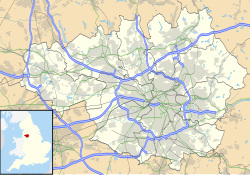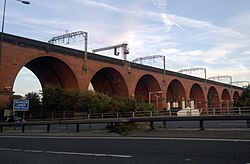| Old Rectory, Stockport | |
|---|---|
 The Old Rectory in 2010 | |
| General information | |
| Architectural style | Georgian |
| Location | Churchgate, Stockport, Greater Manchester, England |
| Coordinates | 53°24′35″N2°09′11″W / 53.40981°N 2.153161°W |
| Year built | 1740s |
| Renovated | 1991 (converted) |
| Owner | Hungry Horse |
| Technical details | |
| Material | Brick, Welsh slate |
| Floor count | 3 |
| Website | |
| Official website | |
Listed Building – Grade II* | |
| Official name | Former Rectory |
| Designated | 14 May 1952 |
| Reference no. | 1356827 |
The Old Rectory is a Georgian building in Stockport, Greater Manchester, England, that formerly served as a rectory. It is designated as a Grade II* listed building and was converted into a pub-restaurant in 1991.





